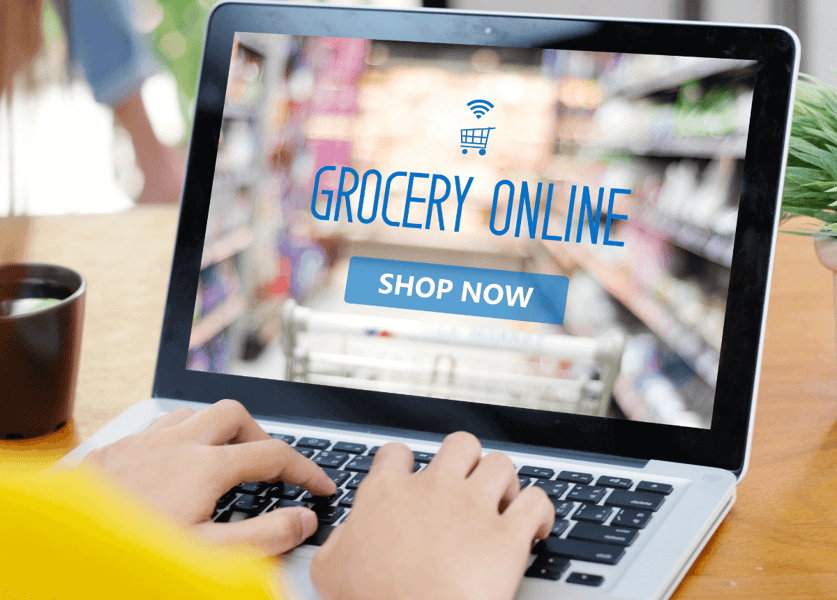Getting to Know the Online and Third-Party Grocery Customer
Grocery Pedro Ramos
Pedro Ramos

While the vast majority of grocery shoppers still prefer to buy in store, the Food Marketing Institute estimates that online grocery sales will reach $100 billion by 2025, or about 20% of the grocery retail market. So, the race is on for food retailers to capture the online grocery shopper. Many grocers have already implemented home delivery, BOPIS (Buy Online, Pickup In Store), and/or curbside pickup options either on their own or through third-party partners like Instacart or Peapod.
As the grocery industry meets customers’ increasing need for convenience, they created different customer models. Each model is composed of a unique way the customer prefers to shop (in-store, online, or third-party shopper), collect purchases (in-store, pickup station, home delivery, etc.) and pay (in-store, online, or third-party payment).
Getting the attention of these different customer types is challenging, requiring different marketing approaches, each with data collection constraints. For instance:
- In-store customers can be marketed to with visual displays and cross merchandising. Loyalty programs provide for collection of customer data and shopping trends form in-store purchases.
- Online shoppers are more disciplined and pragmatic, choosing specific items they’ve researched. While cross-selling exists, they are less impacted by impulse merchandising. Grocers can collect customer personal and shopping history data and provide recommendations.
- Third-party shopping service customers cannot see grocer-direct advertising. The grocer does not have a direct relationship with the customer, may not be able to collect customer specific data or analyze their shopping patterns.
Most systems have not kept up with evolving customer models. Today’s transaction history cannot easily decipher data by customer type. These systems are the lifeblood of grocery operations, providing data that drives labor hours, inventory, merchandising, and customer advertising campaigns. Without distinct data by unique customer type, most grocers are flying blind. Without data visibility to all customer types, grocers are unable to analyze, market, and sell successfully to each customer model.
Third-party shoppers tend to have bigger cart sizes that impact the required labor to serve all customers during checkout, potentially increasing overall wait times. These shoppers have distinct shopping patterns, including the tendency not to buy perishable items, so the impact they have on inventory and store operations is significant.
Ultimately, the grocer desires a personalized experience with each customer. But systems, from loyalty programs to checkout tenders, must keep evolving to ensure a frictionless relationship that can be clearly analyzed.
According to a recent study by the Food Marketing Institute (FMI), grocery stores account for 58% of grocery purchases, making them the primary shopping channel. Overall, the average spend is $109 per week. While in-store shopping is the preferred method above supercenters, club stores, dollar stores, and meal kits, online shopping is growing. Nielson estimates that 23% of households bought groceries online in 2016.
The good news is that online shoppers are not cannibalizing in-store purchases but are adding to them. The online “click and collect” shopper is a driving force, expected to grow to over $100 billion in sales by 2023. Understanding who your online customer is and what they buy from you is of increasing importance.
Online shoppers have increased their percentage of grocery purchases from 16% (2015) to 28% (2018). By far, the age group that makes the most online purchases are Millennials, especially millennial parents. The FMI study reports that 43% of Millennials make online purchases but that percentage jumps to 58% for Millennial parents. The profile for the most frequent online shopper is a male, Millennial parent, with a college education, who makes over $100,000 annually.
The average weekly purchase for the Millennial group is $101 in-store and $127 for online orders. Online shoppers also do their research. Prior to making an online purchase, the study shows that they’ve probably shopped nearly four different channels, made lists, checked recipes, searched online reviews, and checked out weekly specials. As digital natives, Millennials are comfortable navigating the online world to compare and purchase items that fit their lifestyle, making them early adopters of this technology. Older generations have ingrained, in-store shopping habits to overcome and are slower to adapt to online grocery purchases.
Saving time, increased convenience, and ability to get specialty items are of special significance for female online shoppers. But there are trade-offs. Shoppers express dissatisfaction with higher prices, products that are not fresh or are broken, and inability to pick their own items or return items. Perishables and cost savings are still the value of the in-store shopping experience, but online shoppers seem to be willing to make that trade off.
For the future, grocers can expect Millennials to expand their online purchases, especially those who are parents. For all age groups, those who are used to online shopping are willing to expand its use. Online shopping is most accepted in urban areas where time and convenience are of high value.
Are grocers ready to support the online shopper? The answer is – partly. According to an FMI and Nielson Research study, about one-third of retailers cannot support click-and-collect or BOPIS shoppers, and 38% do not have a website nor are prepared for digital engagement. Once again, small grocers may have to rethink their business models to engage with their target customer.
These national statistics point towards the importance of the online shopper, especially the Millennial age group. However, your demographic profile may differ. It is important to have visibility to your proprietary data that identifies specific trends for your online shoppers.
Learn more about what’s changing in the grocery by downloading our whitepaper, “5 Emerging Trends Disrupting the Grocery Industry.”
Related Articles

The New Shopper: Changes to Grocery Shopping Behaviors Post-Pandemic
Before the COVID-19 pandemic, grocery shopping kept to a familiar pattern, which meant that shopping behavior was fairly pred....png)
How to Minimize Produce Shrink: 3 Sources Every Grocer Should Monitor
Grocery stores constantly experience inventory shrinkage, or shrink, and produce shrink in particular is one of the most vexi...
The Staggering Impact of Grocery Shrink and How to Fight Back
Every retailer deals with shrink – product loss from various sources like theft and damage. But unlike clothing or electronic...Subscribe to our blog
Receive free educational resources like exclusive reports, webinars, and industry thought leadership articles straight to your inbox.


